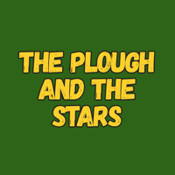
Overview
Synopsis
Ireland is still under the rule of Great Britain, and the Irish people are preparing to rebel. In a small tenement in one of Dublin’s working class neighborhoods live the Clitheroes. Jack Clitheroe used to belong to the Irish Citizen Army, and his wife, Nora, would do anything to keep him from returning to the dangerous cause. Her voice is an unpopular one; almost all of their friends and neighbors support the Nationalist cause. But as fighting breaks out in the streets, there is little that any of the tenement’s residents can do to stay unaffected by the violence of the rebellion. Centered around Dublin’s Easter Rising in 1916, The Plough and the Stars is one of playwright Sean O’Casey’s most renowned and poignant works. The play examines the powerful force of political idealism and the lives of those swept up in its tide. It is the final play in Sean O’Casey’s Dublin trilogy.
Show Information
Context
Sean O'Casey's The Plough and the Stars emerged as the third installment in his Dublin Trilogy, following the successes of The Shadow of a Gunman (1923) and Juno and the Paycock (1924), and was deeply rooted in his own turbulent experiences within Dublin's impoverished tenements and the labor movement leading up to the 1916 Easter Rising. Having been an active member of the Irish Citizen Army (ICA) in its early socialist-oriented days, O'Casey grew disillusioned by 1914 when nationalism began
to read the context for The Plough and the Stars and to unlock other amazing theatre resources!Plot
Characters
| Name | Part Size | Gender | Vocal Part |
|---|---|---|---|
|
Lead |
Female |
Spoken, Soprano, Mezzo-Soprano, Alto |
|
|
Lead |
Male |
Spoken, Tenor, Baritone, Bass |
|
|
Supporting |
Male |
Spoken |
|
|
Supporting |
Male |
Spoken, Tenor, Baritone, Bass |
|
|
Supporting |
Female |
Spoken, Soprano, Mezzo-Soprano, Alto |
|
|
Supporting |
Female |
Spoken |
|
|
Supporting |
Female |
Spoken |
|
|
Supporting |
Male |
Spoken |
|
|
Supporting |
Male |
Spoken |
|
|
Supporting |
Male |
Spoken, Tenor, Baritone, Bass |
|
|
Supporting |
Female |
Spoken, Soprano, Mezzo-Soprano, Alto |
|
|
Supporting |
Male |
Spoken |
|
|
Featured |
Male |
Spoken |
|
|
Featured |
Female |
Spoken |
|
|
Featured |
Male |
Spoken |
|
|
Featured |
Male |
Spoken, Tenor, Baritone, Bass |
Songs
A song with an asterisk (*) before the title indicates a dance number; a character listed in a song with an asterisk (*) by the character's name indicates that the character exclusively serves as a dancer in this song, which is sung by other characters.
Monologues
Scenes
Key Terms
The Abbey Theatre is Ireland’s national theatre, founded in Dublin in 1904 by W.B. Yeats and Lady Augusta Gregory. It became a central hub for Irish cultural identity and the Irish Literary Revival. The theatre continues to promote new Irish plays and dramatists
A recurring theme in historical drama, particularly reflecting internal conflict, loyalty, and national identity.
A political ideology often depicted or explored in 20th-century epic or protest theatre for social critique.
A theoretical framework examining the effects of colonialism on culture and identity, often explored in World Theatre.
An economic and political system advocating collective ownership, explored in drama for its ideals and contradictions.
Videos
Quizzes
Themes, Symbols & Motifs
THEMES
Nationalism vs. Personal Life
In Sean
to read about the themes, symbols and motifs from The Plough and the Stars and to unlock other amazing theatre resources!Quote Analysis
Sorry! We do not currently have learning modules for this guide.
